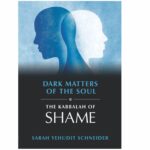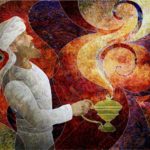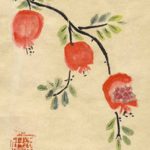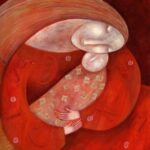When the Body Gives Light to the Soul
Purim, 5777 / 2017 Sarah Yehudit Schneider Based on the teachings of R. Tsadok HaKohen[1]
 “To the Jews there was light—אורה…” (the feminine form of the word indicating the Oral Torah, as opposed to אור, which is masculine and refers to Scripture itself). [Esther 8:16]
“To the Jews there was light—אורה…” (the feminine form of the word indicating the Oral Torah, as opposed to אור, which is masculine and refers to Scripture itself). [Esther 8:16]
“It came to pass, on the third day, that Esther donned malchut…[Esther 5:1]. She wrapped herself in ruach hakodesh (holy spirit)…[Rashi, there].
[On Purim] it all turns upside down… [Esther 9:1].
On Purim we finally embraced our Oral Torah.[2] Our Written Scripture we adopted from the start “Naaseh v’nishma—Whatever you say, HaShem, we are happy to oblige.”[3] Yet, the Oral Torah—with its stifling fences and insufferable details—prompted resistance. Finally, HaShem “held a mountain over our head”[4] and coerced us to accept (what, on Purim, we came to acknowledge as a priceless gift)—our living and evolving Oral Torah (a somewhat misleading term since it now consists of written texts, but that is another story). Always, at moments of quantum shift, someone must rise to the tip of this world, reach up through the heavens and pull the lights down. Esther was called to the mission. At Sinai there was a pyramid of ascent. The people stood at the mountain’s base. The seventy elders climbed further on. Aharon and Yehoshua higher still. Yet Moshe, alone, went up through the clouds to the peak, to the King. And now, here, the time had arrived to pull the Oral Torah down into the hearts of the people, and Esther was the chosen one. Alone and uninvited, she risked her life to approach the king for, unlike its written counterpart, “the Oral Torah is only acquired by one who dies for it.”[5] It is curious that Esther, a woman, spearheaded this shift since we generally associate the Oral Torah with men. They are the ones who generate the rulings that fill the books that comprise our ever-evolving Oral tradition, at least as it is commonly viewed. Yet R. Tsadok HaKohen broadens the definition of Oral Torah and with his correction it’s not at all surprising that Esther was our trailblazer. The Oral Torah is not just the authoritative chain of rabbinic commentary starting with Moshe and continuing till now. Rather, says R. Tsadok HaKohen, everyone contributes to the Oral Torah, even the ignoramuses among us.[6] In this broader sense it’s the sum total of creative insights pressed from the hearts of Jews striving to live with integrity to the truths they absorbed at Sinai. The Talmud declares: “If it is true, then it is Torah.”[7] The authoritative and unchanging Written Torah clearly originated above and without. A searing revelation of Presence engraved the hearts of an entire nation with the truth-of-the-universe compressed into a single burst of light. All the teachings that would ever unfold from those Five Books were included together in that first moment of revelation.[8] The bare bones summary of its communication was scribed by Moshe (in a prophetic state) over a period of forty years and that heavenly transmission is the Written Torah. The Oral Torah is the opposite. Its truths arise from below and within—through the channel of Divine inspiration, called ruach hakodesh—a hybrid of creative insights emerging from the heart of its author, yet sown from on high.[9] Tradition teaches that every Jewish soul experienced the revelation of the Torah at Sinai, and that its Divine truths engraved themselves on the hearts of all present.[10] The authority of an oral teaching derives from the presumption that it is truly one of the implications that shone at Sinai. Though it is first articulated now, it was revealed (albeit in seed form) back then. Most assume that prophesy is the more exalted devekut for its word comes straight from G‑d. In the grip of prophesy, the seer’s personality goes underground for its human shortcomings would distort the signal. Only thus can the prophet rightly claim: “So says G‑d…” The Talmud however disagrees: “The sage is superior to the prophet,” it claims.[11] Based on this and other sources Ramban ranks ruach hakodesh higher than prophesy.[12] R. Tsadok concurs and explores the matter at length.[13] Both prophesy and ruach hakodesh have their advantages. Prophesy is a face-to-face encounter with the holy One and transmits G‑d’s literal word. In ruach hakodesh, G-d is not an obvious partner and its message has a significant margin of error. But ruach hakodesh has its own advantages.- On the inner planes things are close when they are similar and distant when they are different. In ruach hakodesh we join with our Creator in the delight of chidush and our bond comes from sharing the creative process itself. This is a core-to-core intimacy for creativity springs from the soul’s depths.
- Unlike prophesy, the personality is present and active in ruach hakodesh. If the purpose of creation is to actualize the potential of relationship between us and G-d, then this happens consummately through ruach hakodesh. In prophecy the seer is but an instrument of Divine revelation. Their dynamic is more like master/slave. The less of a mark the prophet leaves on the transmission the better. Ruach hakodesh is the opposite. Its transmission requires us to assert ourselves—to try to solve the problem ourselves and to give that effort our all. It is that personal exertion which primes the pump that elicits the flow of guidance from on high.
The ultimate fulfillment of relationship (says the Ari) is when he and she meet from the crown of their heads to the soles of their feet—when every point of one is met and matched by the other.[14] This happens most exquisitely in the mutual partnership between us and God that is the very definition of ruach hakodesh.
In ruach hakodesh (says kabbala) a spirit of wisdom rises from the bones—from the breath of the bones (hevlei d’garma) to be exact.[15] This guiding spirit is the glimmering of our Oral Torah, for it is actually an echo reverberating from Sinai.[16] Every soul experienced that prophetic revelation from (metaphorically) a unique angle and distance. Every soul saw something about G-d and Torah that no one else witnessed, and the mission of our life is to shine that knowing (daat) out to the world through the odyssey of our life. Three times a day we pray for ruach hakodesh in our prayer for “wisdom, understanding and knowledge (daat),” for daat, says Rashi, is a synonym for ruach hakodesh.[17] In exploring this mysterious ingredient of ruach hakodesh, called hevlei d’garma—the essence of our body that endures down here even after death—it becomes clear that the rabbis are describing something with properties nearly identical to what we know as DNA.[18] The soul constricts and congeals as it moves down through the worlds and prepares to incarnate. At each stage it presses out from itself a garment that matches the “materiality” of that level of reality. To enter the physical plane (of maximum constriction and density) it presses forth a kind of essential oil that encodes its quintessence in physical form. This material expression of the soul’s essence is the DNA that directs the body’s development and the individual’s life path. The soul then enclothes itself in this body and together they actualize the potentials of their hevlei d’garma—their shared genome.[19] Since ruach hakodesh derives from this breath-of-the-bones which is related to (if not identical with) our DNA, it follows that the more fully ourselves we become, the greater our access to ruach hakodesh. Conversely, the more generic our lives—the more we don’t pursue what we’re designed to do—the less connected we are to our “bones” and, consequently, the less ruach hakodesh there is. It’s an article of faith that Moshe is the greatest prophet that ever will be. Yet the Talmud qualifies that statement in a most startling way: “True,” it says, “there will never arise another prophet the likes of Moshe [whose transmission was perfectly transparent]. Yet, among the kings, there are [and will be rivals to Moshe].”[20] And who are these kings? They are the masters of ruach hakodesh—the generators of Oral Torah. Now the Talmud is referring to the rabbis that toil in holy texts. R. Tsadok interprets kings as the “disciples” of King Solomon who was the wisest of men, archetype of spiritual kingship[21] and prototype of mashiach. The culmination of Adamic history is the messianic era when creation reaches its full potential. The person (or couple)[22] who will coordinate this transition will be the most enlightened human that ever lived, yet he will not be distinguished by his prophesy but rather by his mastery of the Oral Torah. Whatever truths and secrets Moshe could access through prophesy, mashiach will access, and more, through ruach hakodesh. Yet mashiach is not just a person but also an era—a golden age when breath-of-the-bones percolates up through all the layers of our collective psyche until “Ruach hakodesh (i.e., Daat) fills the world like the sea fills the ocean bed.”[23] This is what it means that the body will give light to the soul.[24] Its bones will impart a “knowledge of G-d” greater than what the soul could access through prophesy. “The woman of valor is a crown to her husband.”[25] The Oral Torah will outshine its venerable elder—the (prophetically channeled) Written Torah—when we, following Esther’s lead, finally wrap ourselves in malchut, i.e., the ruach hakodesh that is our glory and our destiny. On Purim day, when the world turns upside down, and the body’s antics are the mitzvah, may we open ourselves to the wisdom of our bones and invite its holy spirit to reveal what it knows about the mission of our life and the Oral Torah that’s ours to share with the world.פורים שמח
—— [1] Dover Tsedek, Parshat Achari Mot, 4. [2] TB Shabbat 88a as interpreted by R. Tsadok HaKohen, Resisei Laila, p. 158 (56). [3] Ex. 24:7. [4] TB Shabbat 88a; Rashi on Ex. 19:17. [5] TB Brochot 43b, Torah Temima on Bmidbar 19:14, Tanchuma on Bereshit. [6] R. Tsadok HaKohen, Pri Tsadik (Fruit of the Righteous), Vol 2, Parshat V’Ayra, essay 7; Chankha 2 (p. 142); ibid Chodesh Adar, essay 1; Likutei Maamarim p. 80-82; Yisrael Kedoshim p. 152. [7] TY RH 3:8. [8] Sifra 105a; TB Megilla 9b; TY Peah 2:4; Torat Kohanim (end of Bekukhotai); Midrash Tehillim (Mizmor 12). [9] R. Tsadok HaKohen, Tu B’Shvat, p. 115; Zohar 234b. [10] Deut. 29:14; Midrash Rabba, Shmot 28:6; Pirkei de Rebbe Eliezar 41; R. Shlomo Elyahev (Leshem), Leshem SheBo VeAchlama, Drush Olam HaTohu (HDYH), II:46: top/rt. [11] TB BB 12a. [12] .רבנו בחיי על דברים פרק לג פסוק ח חדושי הרמב”ן על מסכת בבא בתרא דף יב/א [13] ר’ צדוק הכהן, דובר צדק, פר’ אחרי מות, אות ד. [14] Ari, Eitz Chayim, Heichal Nukba, Shaar Miyut HaYareach, Chapt. 1. [15] R. Isaac Luria, Shaar Ruach HaKodesh, 1. [16] ספר דובר צדק – פרשת אחרי מות אות ד. [17] Ex. 31:3, Rashi there. [18] R. Isaac Luria, Shaar Ruach HaKodesh, 1; Leshem, Sefer Haklalim, Klal 18, anaf 8, ot 11 (on tselem). [19] The mispar siduri gematria of הבל and DNA are identical, they are both 19 (which is the numerical gematria of Chava (חוה)). [20] TB RH 21b. [21] Chron. 1:29:23. “Solomon sat upon the throne of Hashem.” [22] The primary shift that characterizes the messianic time is that the moon (Shekhina or cosmic feminine) regains her stature which enables, finally, her consummate union with her Blessed Holy One, and that tikun will play itself out on all levels, including (most likely) the messianic personage, itself. [23] Habakuk 2:14. [24] LeChol Tichlah, 5659 [1899] (in Sefer HaMaamarim 5659 [1899], p. 97ff.); Sefer HaMaamarim — Melukat, Vol. IV, p. 231, and references there; Leshem: ספר שערי הלשם חלק א – סימן יג – אור וכלי בבריאה [25] Proverbs 12:4; R. Tsadok (ibid) “ואז יהיה חדשה דנקיבה תסובב גבר ותתעלה חכמת שלמה למעלה במקום החכמה עילאה למעלה ממדריגת משה כטעם וירום ממשה



